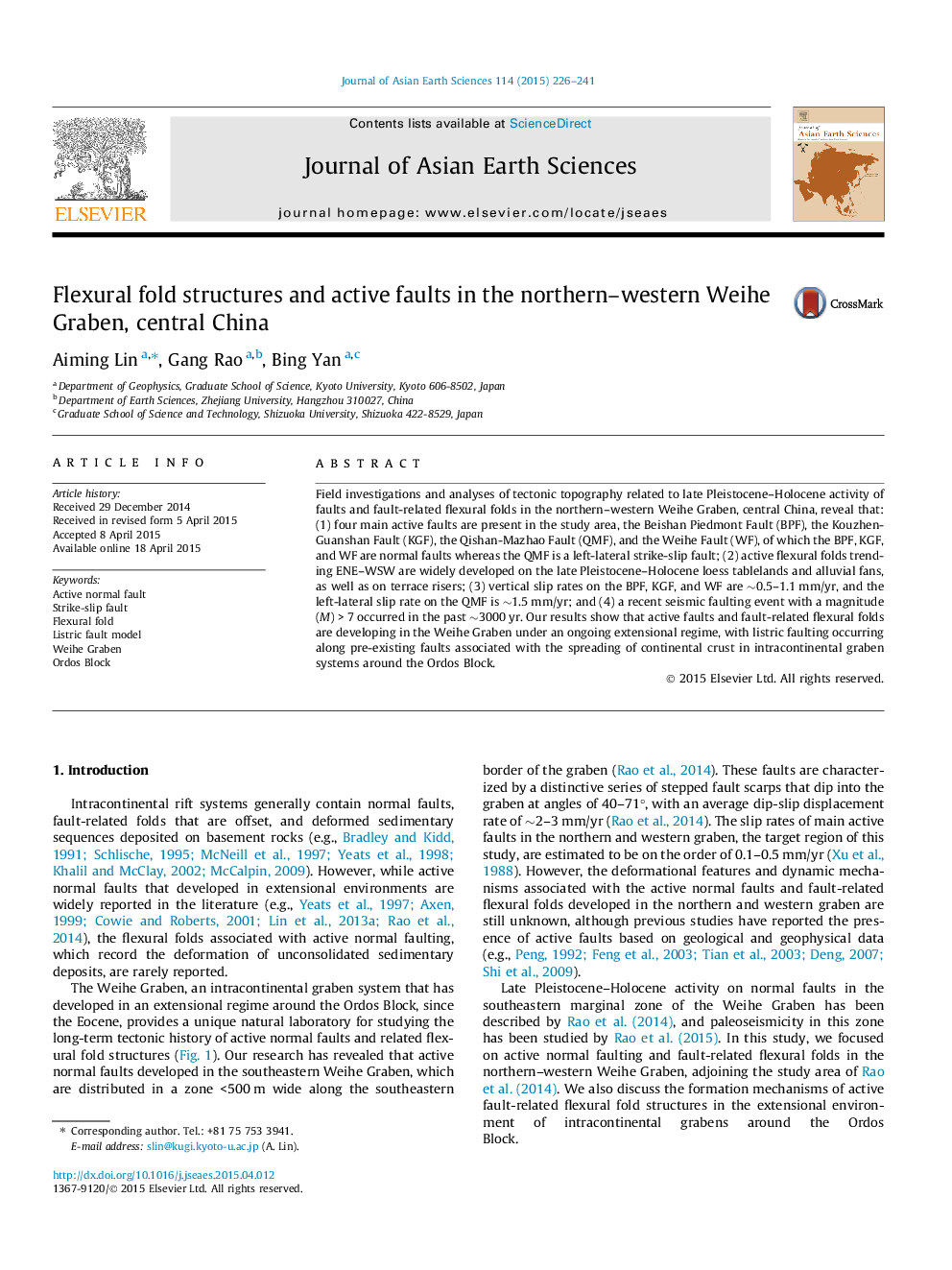| Article ID | Journal | Published Year | Pages | File Type |
|---|---|---|---|---|
| 4730127 | Journal of Asian Earth Sciences | 2015 | 16 Pages |
•Active faults and flexural-folds are identified in the northern-western Weihe Graben.•The slip rates are estimated to be ∼0.5–1.5 mm/yr for each active fault.•The most recent event is estimated to be occurred in the past 3000 yr.•A listric faulting model is supposed to explain the formation mechanism of flexural-folds.
Field investigations and analyses of tectonic topography related to late Pleistocene–Holocene activity of faults and fault-related flexural folds in the northern–western Weihe Graben, central China, reveal that: (1) four main active faults are present in the study area, the Beishan Piedmont Fault (BPF), the Kouzhen-Guanshan Fault (KGF), the Qishan-Mazhao Fault (QMF), and the Weihe Fault (WF), of which the BPF, KGF, and WF are normal faults whereas the QMF is a left-lateral strike-slip fault; (2) active flexural folds trending ENE–WSW are widely developed on the late Pleistocene–Holocene loess tablelands and alluvial fans, as well as on terrace risers; (3) vertical slip rates on the BPF, KGF, and WF are ∼0.5–1.1 mm/yr, and the left-lateral slip rate on the QMF is ∼1.5 mm/yr; and (4) a recent seismic faulting event with a magnitude (M) > 7 occurred in the past ∼3000 yr. Our results show that active faults and fault-related flexural folds are developing in the Weihe Graben under an ongoing extensional regime, with listric faulting occurring along pre-existing faults associated with the spreading of continental crust in intracontinental graben systems around the Ordos Block.
